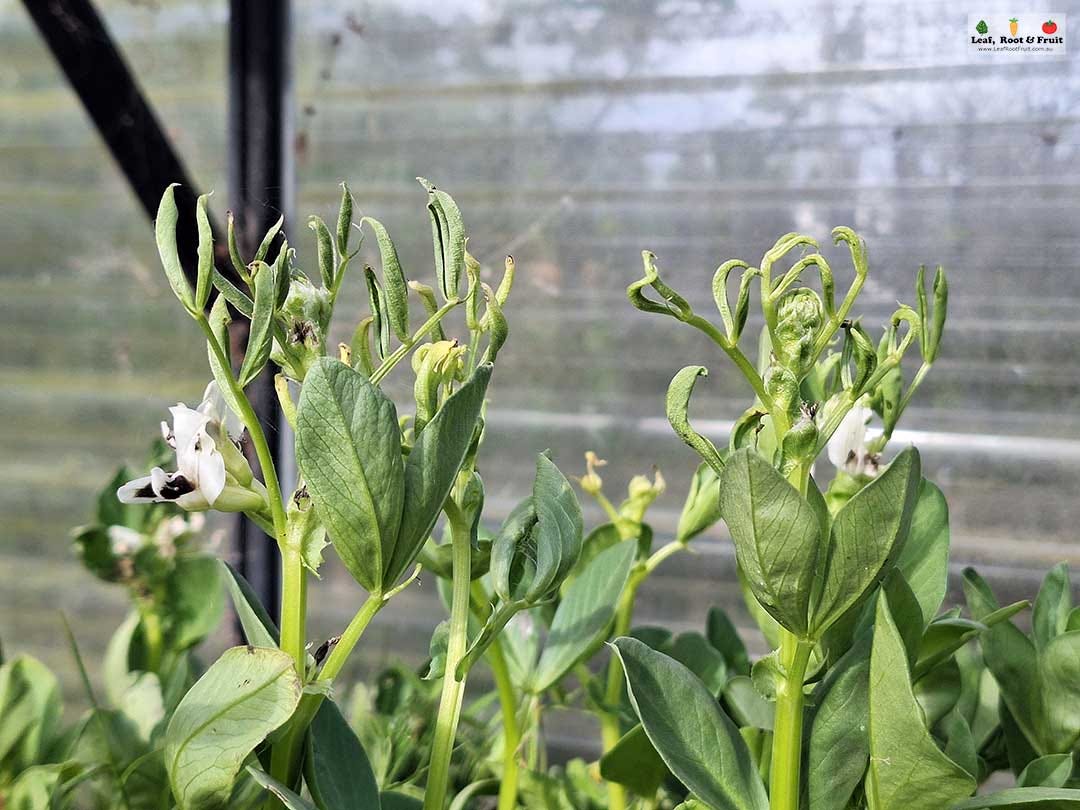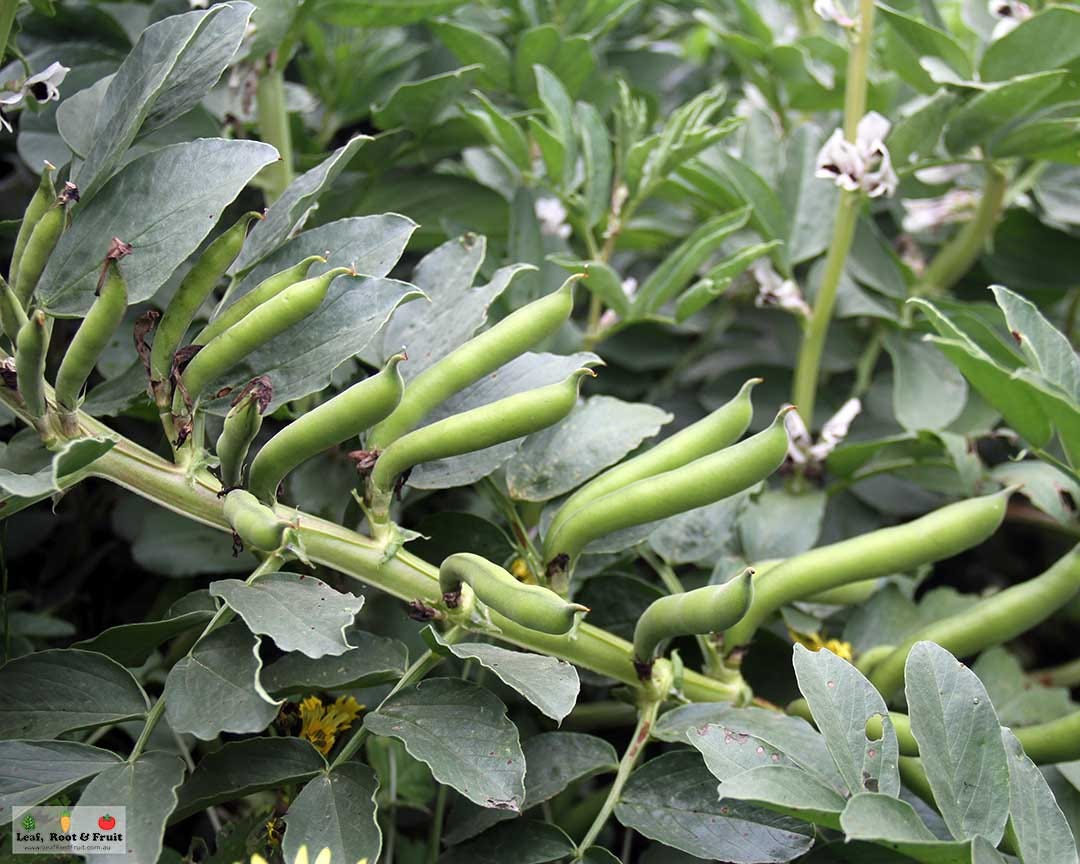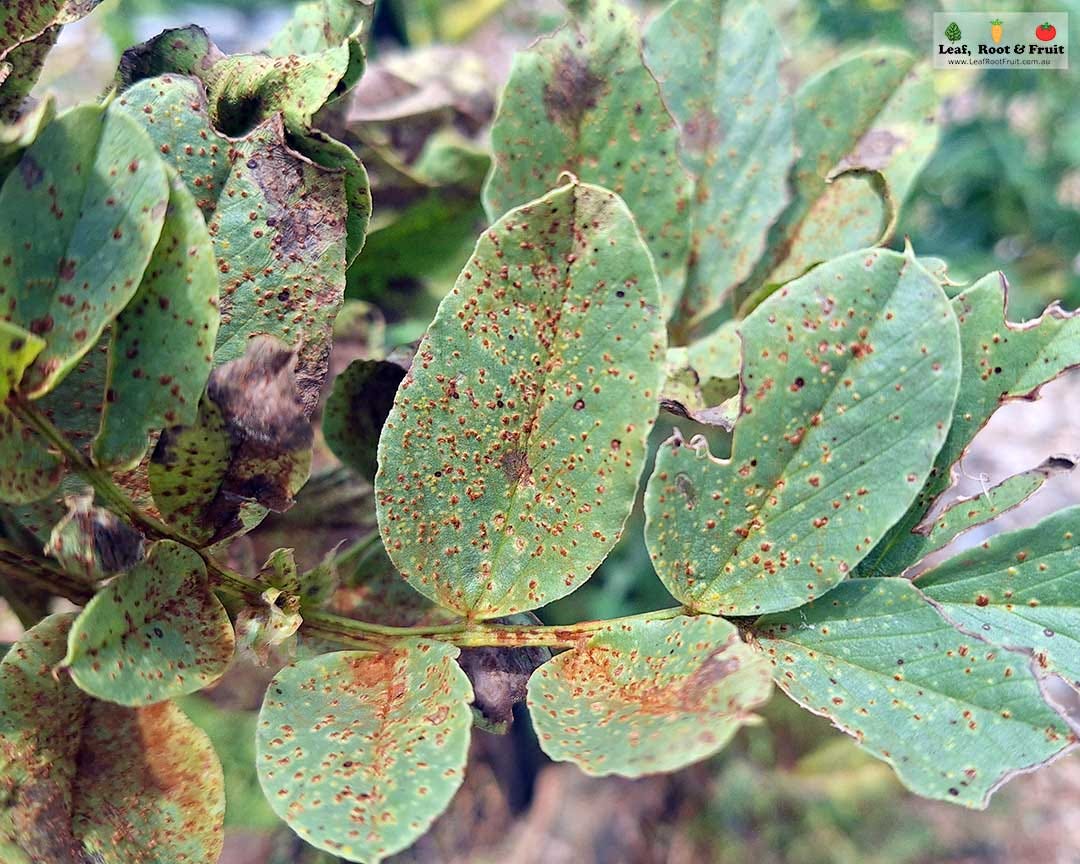My cousins are some of my best mates. My dad was one of four brothers and they each took turns to milk the cows in the dairy at Grandma and Grandpa’s farm in Mickleham, just north of Melbourne. Every weekend, while our dads worked, my cousins and I would make hay bale forts, climb trees, kick the footy and get into all sorts of mischief. We would spend time with Grandma Ruth, collecting eggs, baking jam roll, and sometimes helping in the garden. These were some of the best times of my life and formed strong childhood memories.
Grandma Ruth was more preoccupied with farm life than the garden, but she still tended her flower beds with care. Sweet peas were one of her favourites. Grandma Ruth’s only fruit tree was a quince and the only vegetables I remember her growing were broad beans (known as fava beans in some parts of the world).
Every autumn Grandma Ruth would dig over a patch in the garden and plant the wrinkled bean seeds she’d saved at the start of the previous summer. There would always be more seeds than she needed, and she would offer the extras to us grandkids to take home and plant in our own gardens. This led to some of my earliest experiences of a home-grown glut.
Every spring, Grandma Ruth had an amazing crop of broad beans. Each weekend she would encourage us to pick a paper bag of broad bean pods and take them home to Mum to cook up. Spring was the only time of the year that we ate broad beans. But even then, I didn’t really like them.
At the end of the season, Grandma would leave some pods on the plants to mature. The seeds within would dry on the plants and she would shell them and store them in a glass jar. I can still picture that glass jar of broad bean seeds sitting on the sideboard in the run-down old farmhouse. The jar and its contents patiently watching over us cousins as we enjoyed Grandma’s delicious baking while our fathers milked the cows. The shrivelled beans were just waiting for the return of autumn. Waiting for their chance to be planted and to continue the cycle.
Broad beans: green manure or genuine food?
Now that I’m an adult, my palate has evolved and I love the flavour of broad beans. They provide a staple crop in spring, when there’s very little else being harvested. Along with asparagus, broad beans provide a respite from the long winter glut of broccoli and cauliflower.
But I hate the work involved with broad beans. Not the work to grow them – that’s dead easy. Just scatter some seeds across a garden bed in autumn and that’s it. What I hate is the work required to get them to the table. My mother does too. As kids, when we presented her with some of Grandma Ruth’s broad beans, Mum would thank us through gritted teeth. It’s only as an adult that I understand why.
First you take a big bucket of freshly harvested broad bean pods. Shell them. Your harvest volume is now a fraction of what you started with. Picked young and tender enough, these beans can now be cooked and eaten. But if you’ve left the pods to fill out with mature beans, then their skin will have become tough and bitter. So you need to peel each bean individually. The easiest way to do this is to quickly blanch or fry them. Then the skins split and you can squeeze the beans from their skin. Easy, yes. Time consuming, hell yes.
The problem with picking only the young pods is that the beans are quite small, so you need to pick and pod two bucketfuls rather than just one to get a small meal from them.
Either way, preparing broads beans for the table is a lot of work.
I grow a lot more broad beans than we need. Each autumn, as I remove my summer crops, I replace them with a green manure crop. I grow this crop to improve my soil (more on that here). Like all legumes, broad beans are nitrogen fixing plants and are a great choice for green manure crops. I love diversity in my garden, so along with the broad bean seeds I usually scatter lupins, coriander, peas, and any other vegetable seed that will grow at that time of the year.
Conventional wisdom says to dig a green manure crop in before it flowers. But if I did that here in Kyneton, the beds would sit fallow for a good six weeks before I planted my summer crops. So I allow the green manure to flower. And this leads to an almighty abundance of broad beans. I usually harvest only a few bucketfuls of pods for us to eat. I always leave a small patch of around 3 x 3 metres to mature the pods and the seeds for next year.
I probably eat more broad beans in the garden than I do at the dinner table. I’ll pick a few of the smaller pods as I’m walking past the plants and shell and eat the raw beans right there. The kids will often do the same. I also like munching on the flowers and tender shoots of broad beans – more than I like the beans themselves. These both taste just like the beans, but without the work. The flowers make a great garnish. You can steam the growing tips or eat them raw.
I also use broad beans as my primary indicator plant when running bioassays to check for herbicide contamination (more on that here).

Even if you don’t eat many broad beans, the plants are a very useful thing indeed!
Favaism: Life without broad beans
Eating broad beans can trigger a severe reaction in people who have a genetic disorder known as G6PD deficiency, also called favaism. It’s most common in people from the Middle East and parts of sub-Saharan Africa but it’s also present in other parts of the world. For more information, see the Australian Government’s Health Direct website.
Common problems when growing broad beans
Broad beans are bullet-proof and dead easy to grow. But there are a few problems I see every year.
Rust can affect the plants. This is a fungal disease and it tends to occur when humidity is high (pretty much all of winter here in Kyneton). Some varieties of broad beans are more susceptible than others. Some varieties are so susceptible to disease that once winter hits Kyneton, they just curl up their toes and die. You can increase the airflow all you like, but when it comes to broad beans, careful variety selection is the best way to avoid disease.
Some varieties grow very tall. This requires you to stake the plants or they topple over under the weight of the pods as they develop. Some varieties don’t grow as tall and therefore only require minimal staking at best – perhaps a stake on each corner of the garden bed and a string run between them to stop them flopping on the path. But I don’t bother and quickly learn to step over the fallen plants.
Aphid infestations can be severe in autumn and spring. I find that thanks to my resilient garden ecosystem and perhaps changing weather conditions, even the worst infestations clear up in due course with no effort on my part. The affected plants tend to be productive anyway.

Then there’s the issue of poor pod set. My plants flower profusely in late winter and early spring and the bees love visiting these flowers on sunny days. But some of the flowers shrivel and fall off, amounting to nothing.

At the end of September or start of October the remaining flowers magically start forming pods (yes, each year I record the date I first notice broad bean pods forming in my gardening diary). Interestingly, the same phenomenon occurs in warmer regions, such as Melbourne, but the pods begin forming earlier than in my cooler climate. Temperature must play a role in pod set (which is why I record and compare the dates I notice pods setting – it gives me an idea of how warm the conditions are in early spring). If your broad beans are flowering but not setting pods then give them a good dose of patience. They’ll get there when it warms up.
The following posts in the Vegetable Patch from Scratch series will give you more information on:
The nitty gritty of growing broad beans: phenology, varieties and planting
Timing
This chart shows the best times to grow broad beans based on my experience of growing these crops in Melbourne (warm temperate) and Kyneton (cool temperate), both in south-eastern Australia. The timing is applicable for growers in the same climates across the southern hemisphere. Northern hemisphere folks will need to adjust the timing by six months.




